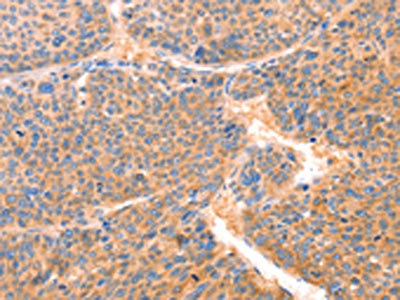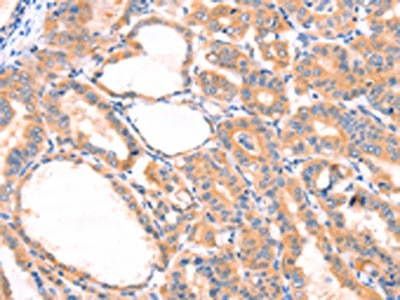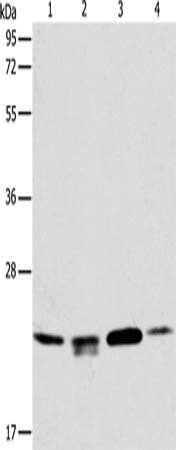
The image on the left is immunohistochemistry of paraffin-embedded Human liver cancer tissue using CSB-PA242653(PRDX2 Antibody) at dilution 1/80, on the right is treated with synthetic peptide. (Original magnification: x200)
PRDX2 Antibody

CSB-PA242653
ApplicationsWestern Blot, ELISA, ImmunoHistoChemistry
Product group Antibodies
ReactivityHuman
TargetPRDX2
Overview
- SupplierCusabio
- Product NamePRDX2 Antibody
- Delivery Days Customer20
- ApplicationsWestern Blot, ELISA, ImmunoHistoChemistry
- CertificationResearch Use Only
- ClonalityPolyclonal
- ConjugateUnconjugated
- Gene ID7001
- Target namePRDX2
- Target descriptionperoxiredoxin 2
- Target synonymsepididymis secretory sperm binding protein Li 2a; HEL-S-2a; natural killer cell-enhancing factor B; NKEFB; NKEF-B; peroxiredoxin-2; PRP; PRX2; PRXII; PTX1; TDPX1; thiol-specific antioxidant 1; thioredoxin peroxidase 1; thioredoxin-dependent peroxide reductase 1; thioredoxin-dependent peroxiredoxin 2; torin; TPX1; TSA
- HostRabbit
- IsotypeIgG
- Protein IDP32119
- Protein NamePeroxiredoxin-2
- Scientific DescriptionThis gene encodes a member of the peroxiredoxin family of antioxidant enzymes, which reduce hydrogen peroxide and alkyl hydroperoxides. The encoded protein plays an antioxidant protective role in cells, and it may contribute to the antiviral activity of CD8(+) T-cells. The crystal structure of this protein has been resolved to 2.7 angstroms. This protein prevents hemolytic anemia from oxidative stress by stabilizing hemoglobin, thus making this gene a therapeutic target for patients with hemolytic anemia. This protein may have a proliferative effect and play a role in cancer development or progression. Related pseudogenes have been identified on chromosomes 5, 6, 10 and 13.
- ReactivityHuman
- Storage Instruction-20°C or -80°C
- UNSPSC12352203


